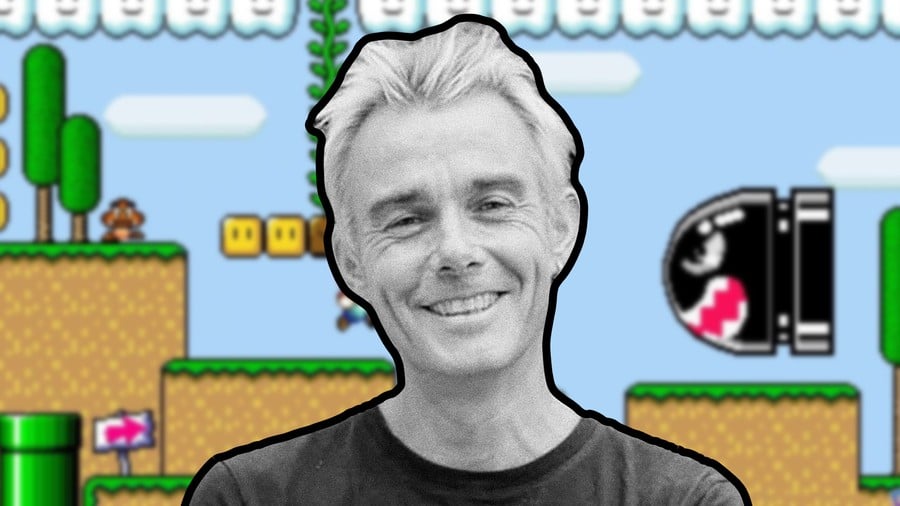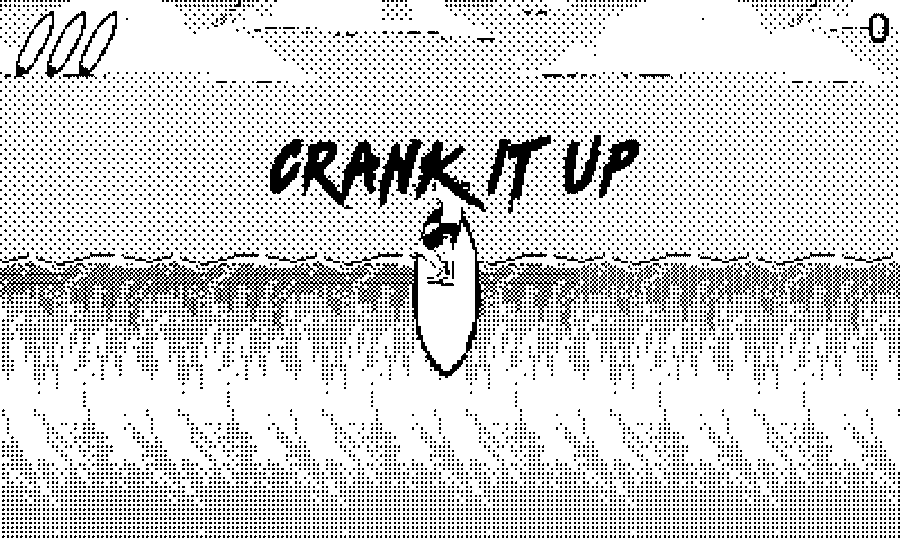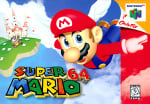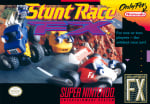
Giles Goddard has had quite the career. The British game developer got his start in the late 1980s at the London studio Argonaut Software, before receiving the incredible opportunity to travel to Japan (while still a teenager) to work with Nintendo on the original Star Fox.
It is a story that has been covered extensively in the past (including in our own Making Of feature), so we won't go into it in too much detail here. Nevertheless, what you need to know is that after finishing development on Star Fox, he later ended up applying to get a job at Nintendo's Entertainment, Analysis, and Development (EAD) division, where he became one of the first non-Japanese employees in the company's history and got to play an important role in the development of such Nintendo classics as Stunt Race FX (otherwise known as Wild Trax), Super Mario 64, and 1080° Snowboarding.
Earlier this year, we had the amazing opportunity to sit down on a call with Goddard, who talked us through some of his highlights of working at Nintendo and how the company still shapes the way he approaches video game development to this day with his current studio Chuhai Labs.
According to Goddard, one of the major things that attracted him to Nintendo in the first place was the company's focus on taking risks and trying out new ideas — no matter how strange. Nintendo was by no means a casual environment to work in, with employees still expected to wear beige work uniforms around the time Goddard had joined, but when it came to its output, there was an expectation to think outside of the box and to try to come up with new ways of making games that nobody had ever seen before.

As Goddard explains, "There was something about the way that Nintendo makes games that was a big part of what I wanted to be a part of. Everything EAD made had to be completely fresh and new. That was our sort of mission for a good few years. Come up with something new, come up with something new. It was kind of embedded in our heads. That was a big draw for me. And also, their priorities when it came to making consoles kind of aligned with mine."
During his time at Nintendo, Goddard was involved with a number of projects, but one of his most famous contributions to the company was his role in creating the now iconic Mario face, which appears at the beginning of Super Mario 64. This was inspired by an experiment that Goddard was conducting at the time that took advantage of the new camera functionality on the SGI Indy — a blue, pizza-boxed shape workstation that was being used by Nintendo to develop its games for N64.
As the story goes, Goddard was messing around trying to get the camera to recognize his hand movements but wasn't quite sure how to get it working properly. So instead, he settled upon getting it to recognize blobs of colour, placing a bunch of brightly-coloured ping-pong balls on his face, in order to create a makeshift motion capture rig. He then asked the Mario 64 animator Yoshiaki Koizumi to create an animate-able 3D version of Mario's face and was quickly able to get it to replicate his facial expressions using the set-up he had made.
One day, as Goddard was messing around with the prototype, Miyamoto happened to walk past and spotted the demo. The Donkey Kong creator suggested that they include it as a part of Mario 64, and offered another suggestion too: they should also make it so that players could stretch and pull the character's face. The rest, as they say, is history.
"I think at the time nobody really thought much of it, to be honest," says Goddard. "When Mario 64 came out, it wasn’t a big part of the game. That was just the fun thing to do while the thing was loading. So they just didn’t think anything of it. It wasn’t something that they thought about and thought, ‘Oh, let’s make something more of it and go from there.’ It was just an afterthought really."
Goddard continued working on a bunch of projects following Super Mario 64, with one of them being an idea for a new Winter-Sports-themed game, pitched to coincide with the 1998 Winter Olympics in Nagano. Originally, as Goddard tells us, this was meant to be a skiing title, thanks to Shigeru Miyamoto's affection for the Winter sport, but being an avid boarder, he managed to convince the legendary games designer to rethink this idea, leading the team to focus on snowboarding instead. According to Goddard, Nintendo considered the change to be a bit of a risk but was willing to take the chance that the project would win over a wide audience.
"[Snowboarding at the time] was sort of niche and a bit risky," says Goddard. "They weren’t really sure whether it was going to be a massive flop or a huge hit, so it was quite a risk to them. The safer option would have just been Mario Skiing or something like that. But I think at that time they were prepared to take quite big risks on these things."
The safer option would have just been Mario Skiing or something like that. But I think at that time they were prepared to take quite big risks on these things.
1080° Snowboarding, as the game was eventually called, is a bit of an outlier in the Nintendo library of games, targeting a slightly older audience with a funky electronic soundtrack, cool character designs, and plenty of attitude. At one point, Goddard even petitioned Nintendo to license music from The Prodigy — the group behind tracks like 'Firestarter' and 'Smack My Bitch Up' — though he believes this was probably a step too far for the company.
Hearing how fondly Goddard talks about his time at Nintendo, it may seem weird to think that he would ever want to leave. However, in the early 2000s, he did just that, crediting his desire to explore new avenues and also being aware that he may not have the same opportunities to grow within the company as a foreigner.
As Goddard tells Time Extension, "I left Nintendo because I felt I wasn’t really progressing. I’d sort of reached — I don’t want to say the peak — but being a foreigner in Japan you don’t really get much opportunity to go past a certain level. And I thought I’d sort of reached that level. And rather than just churning out game after game, I just wanted to try something different for a while."
Goddard spent a short time freelancing for Nintendo immediately following his decision to leave, including working on the GameCube port of Doshin The Giant. Then, after that, he formed a small company called Vitei in 2002. This was a name he chose as it was "about the only five-letter domain left that's half decent."
Vitei started off as a small company of four or five people based out of a penthouse room in a Kyoto office building, but thanks to Goddard's connection with Nintendo, they became an extension of EAD, working with the publisher on various projects. We asked Goddard what this experience was like.
We definitely felt like we were definitely still a part of EAD. That’s why I always said we were like "1.5-party" because we weren’t part of Nintendo, but we were basically funded by them.
He replies, "It was a mixture of [us pitching] and them coming to us and saying, ‘We’ve got this project that we want to make but we don’t have a team to make it. Can you make it?’ Or there was a prototype that they had wanted to make and they didn’t know how to do it and we knew how to do it. So it was a very kind of mutual relationship. It wasn’t just us pitching ideas all of the time. They were coming to us all of the time and saying they needed help with stuff. So we definitely felt like we were definitely still a part of EAD. That’s why I always said we were like "1.5-party" because we weren’t part of Nintendo, but we were basically funded by them."
Some of the games that Vitei developed with Nintendo during this time include the puzzle game Theta (Nintendo DS), the motion-controlled rock climbing game Rock N' Climber (Nintendo Wii), the submarine simulators Steel Diver and Steel Diver: Sub Wars (3DS), and the third-person tank game Tank Troopers (3DS).
As Goddard tells us, these weren't the only games that Vitei was working on with Nintendo, however, as the company was also constantly prototyping countless projects that never ended up being released. We asked Goddard if he could discuss any of these abandoned ideas, but, likely with an eye on Nintendo's lawyers, he was only able to talk about two: an ultimate frisbee game and another project where you controlled a bunch of puppets and made them perform in front of an audience for applause. Both were developed with the Nintendo Wii in mind.
"I still am a big Ultimate Frisbee fan," Goddard explains, talking about the motivation behind the Frisbee idea. "I think at that time it was the first-gen Wii and I wanted to see if it would be possible to make a frisbee game without using any buttons. So basically, it was all down to the action of doing that. I thought it felt really, really good, and so did Nintendo. But they didn’t think that there was a big enough audience [for it]. You know, it was a very niche thing to make for them, but as a game idea, it was great.
He continues, "The other one for the Wii was a puppet game where you sort of controlled puppets with your Wii controllers and then you made an actual scene to play in and then you showed it to people, and depending on how you ended the act they would give you boos or cheers or whatever and that’s how you’d progress through the game. I think at that time though they had a thing called Marionette, and I think they were trying to make their own puppet game by coincidence so that sort of got pushed away. But we did tons and tons of just like wild, two-month projects that never saw the light of day."
As a studio, Vitei continued working with Nintendo on second-party titles throughout the 2010s, but from 2012 onwards, Goddard became increasingly interested in the idea of experimenting with VR, following the launch of the Oculus Rift Kickstarter. In the past, commercial VR had historically been costly and didn't necessarily produce the best results, but things seemed different this time around. So Goddard ended up getting his hands on some Oculus Rift DK1s and forming an off-shoot called Vitei Backroom (later renamed to Chuhai Labs in 2020), which was based out of the backroom of the Vitei offices. This allowed a small team to work on experimental projects while the main studio still maintained its working relationship with Nintendo.
There’s no way you could have like a secret VR game because they’d immediately find out. So we basically just made this completely different company and room and studio and it was literally the backroom of our current office.
He tells Time Extension, "I really wanted to make some VR stuff outside of Nintendo because that’s not a Nintendo thing. But the way Nintendo makes their games is they lock down the studio, especially if it’s quite a big title, where you can’t have people going in or out without cards or stuff like that. Nintendo is very, very strict. So there’s no way you could have like a secret VR game because they’d immediately find out. So we basically just made this completely different company and room and studio and it was literally the backroom of our current office. And we just started making prototypes in there."
Some of these prototypes included Paper Valley (a peaceful adventure game where the players' primary interaction with their environment is throwing colorful paper planes) and a 1080°-like snowboarding game (which later became Carve Snowboarding).
As Goddard explains, "We had a VR prototype of a snowboarding game that we were taking around to shows 3 or 4 years before Carve came out. Because it’s such an ideal way to do snowboarding as a game, I think. I think it’s the most perfect way to make a good snowboarding game in VR because you have everything you need. You can look around you, which is vital for snowboarding, and you just need your hands basically. You don’t need your legs to actually control the game ironically. So I always thought it was ideal."
Goddard is reluctant to call Carve his 1080° sequel, believing Nintendo would likely sue him if he made the connection, but admits that the game was an extension of many of the same ideas. Chief among these is the cabin that players can explore in VR, which acts as the UI and is an evolution of the character selection screen from 1080° Snowboarding.
"That’s a very snowboarder-y thing to do," Goddard tells us. "Because if you’re a snowboarder, you don’t just go to the mountain and then go home. You usually stay in a cabin or stay somewhere near the mountain because you are there for a few days. So it’s very much a thing where you are snowboarding and then resting and then playing a bit and then going snowboarding again. So I wanted to sort of take that idea a bit further from 1080°, where it’s not just a selection screen. So it’s an actual place where you relax and just hang out and that kind of thing. This is another thing where in VR, it’s the sort of the ideal thing to do."
Of course, VR isn't the only piece of new technology that Goddard has become enamoured with over the last decade or so. Another piece of tech he has grown to love is the Playdate, a crank-based handheld from Panic, the Oregon-based publisher of games like Firewatch and Untitled Goose Game, released in 2022.
According to Goddard, he first fell in love with the device at a BitSummit event in Kyoto, when Nick Suttner, the head of publishing of Panic, showed him an early production model that he had brought with him to the conference. At the time, the device was still semi-secret within the industry, but Suttner was giving demonstrations to various developers on the show floor in order to generate interest.
I just played it for a few minutes and thought, ‘Oh wow, this is so cool. Just the form factor and the fact that it had a crank and it was yellow. I just wanted to make a game for it.
"I just played it for a few minutes and thought, ‘Oh wow, this is so cool.’" Goddard recalls. "Just the form factor and the fact that it had a crank and it was yellow. I just wanted to make a game for it. So as soon as I saw that, I kept pestering Nick and Panic sort of saying, ‘Give us some Playdates so we can make something on this thing!’
Since then, Chuhai Labs has released two games for the system. The first, Whitewater Wipeout, was released as part of Playdate Season One (a collection of free games that every Playdate owner can access) and was a simple surfing game, tasking players with spinning the device's crank to perform rotations in the air to score points, while the second was Carve Jr, "a pint-sized prequel" to its VR snowboarding title that saw players making their way down the side of a mountain avoiding rocks and skiers.

We ask Goddard what attracted him to the device. He responds, "I think for certain games where you need to control the rotation of something very accurately a crank is better than buttons and it is better than an analogue stick. That's probably not many games – but snowboarding is one, surfing is one, and probably golf or something like that too. For those kinds of games where it is all about rotation and being able to control that rotation, the Playdate is literally the only console that lets you do that with its controls."
Obviously, sports aren't all Chuhai Labs are interested in making. Last June, the company briefly showed off a brand new game in an interview with the YouTuber Tiny Yellow Machine that looks to be a Star Fox-style shoot 'em up for the device. This will again take advantage of the handheld's crank (presumably to switch between camera perspectives) and is still yet to receive an official announcement.
More recently, Goddard also teased something big in another interview with Eurogamer (potentially the same project), telling the reporter Robert Purchese "If you like Star Fox, I think you'll like this". Whatever it is Chuhai Labs has planned for the future, it is almost guaranteed not to be anything run-of-the-mill. As Goddard tells us, he hates "regurgitating old stuff", with both he and the rest of the company always looking for cool, new ways to experiment with the medium and subvert player expectations. It's an attitude he attributes to those days spent working in EAD and is the reason why he still manages to stay so interested in the development process to this day.
In closing out the interview, he tells us, "All of the games we’re sort of working on are very much — I don’t want to say it’s my DNA because obviously, it’s other people making the games – but all the games we’re making have cool ways of controlling that make them very different from all the other games that people have played so far. And that’s like the perfect direction for me. Making things that nobody has ever seen before; that are really cool, and are fun to play..."









